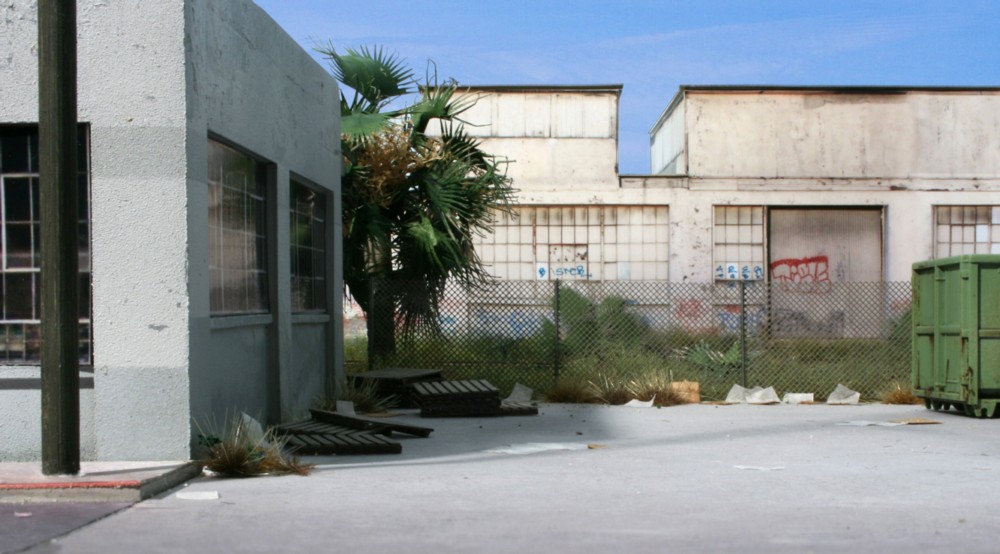
Often, when I tell other modelers that I’ve just made a photography trip to Allapattah (Miami) or Vernon (LA), the immediate response is, “Wow, you’re brave. Weren’t you afraid of being mugged?”. Let’s get one thing straight up front, I’m not brave! But no, I can’t say I’ve ever felt even remotely threatened. Granted, I always go during business hours. Both areas are essentially industrial parks focused on the heavy lifting of commerce.
Dangerous just isn’t the adjective I’d use. Better descriptors for both places would be: authentic, peaceful, serene, understated architectural elegance, quiet dignity. They have a soul. They have texture. They’re local treasures and won’t be there forever.
When visitors see my layouts in person they’ll make comments along the lines of “so detailed” or “so realistic”. I can’t say either is my goal. What I’m really trying to do is convey that sense of understated elegance and serenity, to convey emotion and not simply document by duplicating rivets in miniature. Viewed in person I doubt that I’ve done that and, due to the limitations of size, optics, viewing angles, etc., I’m not sure that it can be done. It can be accomplished however through photography where you can control the viewing experience via framing, low viewing angles, lighting, and cropping in actual sky backdrops. This is why I also suspect that when people see my layouts in person they’ll say “this isn’t what I expected”.
There is a vast distinction between simply using modeling as a form of documentation versus conveying emotion. It’s the ageless debate across all artistic mediums of “is this illustration or is it art?” The latter is much more difficult to achieve. The litmus test is whether the subject conveys information or emotion. On one side of the spectrum is simply illustrating a point in 3D. This is the purpose of an architectural model. You can copy a scene shed by shed, window by window, be one hundred per cent prototypically accurate in a technical sense, and still leave the viewer emotionally unmoved. If however, we go too far the other direction we either end up with a cute, amusement park like caricature, or just a layout surface with modeling subjects plopped down in an incoherent, unbalanced pattern. The sweet spot in the middle is where art lies and it can be a hard target to hit indeed.